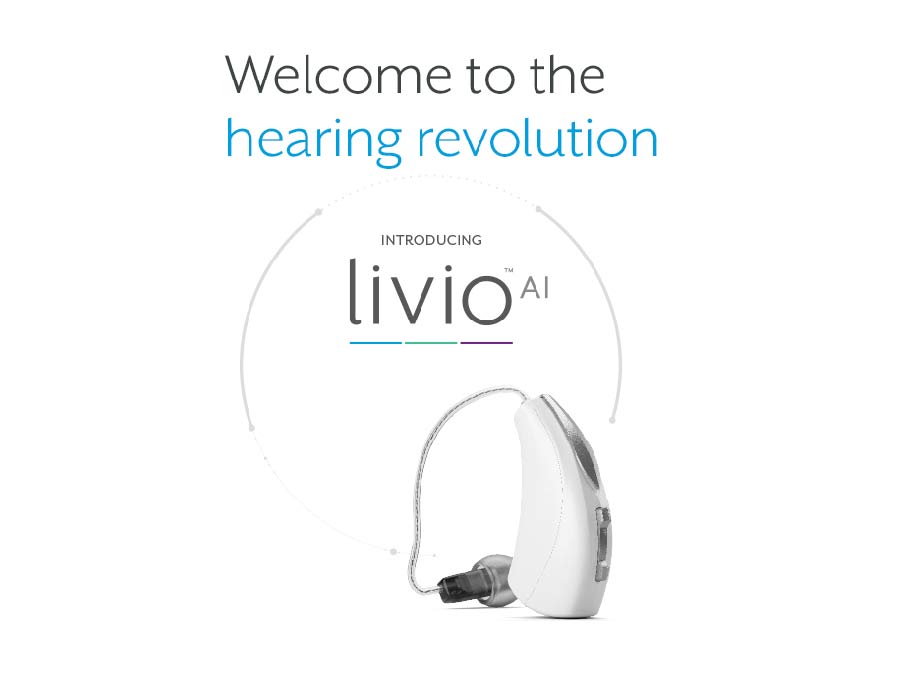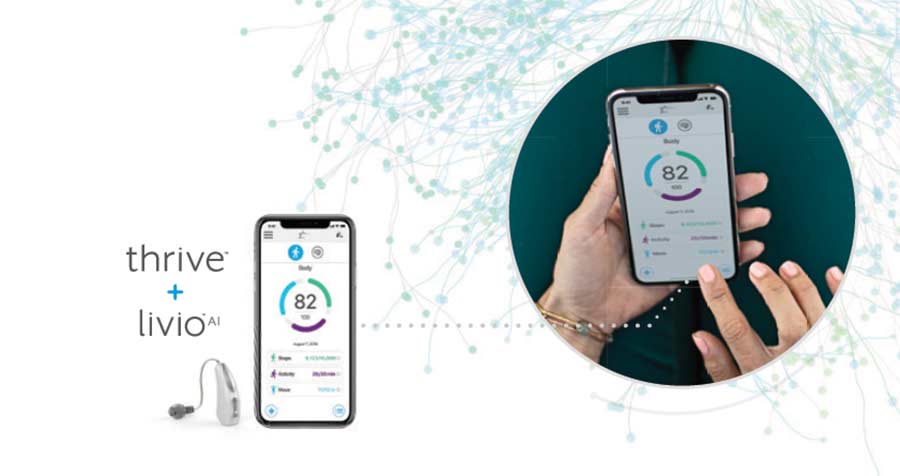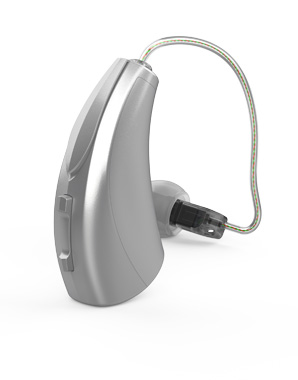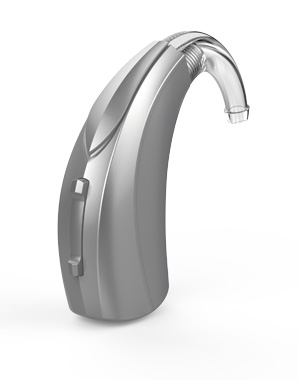The much-awaited Livio AI from Starkey has now been launched and they have been a bit of a smash hit in the tech world. But is it more sizzle than substance? Not really, I think that the premise of the Livio AI opens up an entirely new use case for hearing aids and may well make the devices far more attractive to new consumers. The premise of the devices represents a great leap forward for hearing aid technology. Starkey says, welcome to the revolution, and for once, that actually isn't quite marketing fluff. Let's take a look at why I think this latest offering points the way for hearing aids in general.

A New Use Case
The Livio AI presents users with a completely new use case for hearing aids. A merging of different technology means that the device offers far more than just better hearing, it also offers a more holistic view of health and to a certain extent cognitive fitness. In the near future, it will also offer a feature that will allow caregivers or loved ones to monitor if an older user takes a fall. Let's take a look at what has been said and cut through the marketing fluff.
The Big News A Hearing Aid That's a Health Tracker and More
The Livio AI is truly a multifunctional device that combines features from wireless headsets, fitness trackers and health apps, and finally, language translation programs. That's right, language translation. Oh, and it appears to be a very interesting hearing aid as well. The keys to all of this are a brand new chipset, an embedded sensor on the chipset and 2.4Ghz communication between the hearing aid and a smartphone. This allows the monitoring of movement and a deeper instantaneous communication between the hearing aids and a smartphone which has been leveraged to deliver real user benefits.
Health Monitoring With The Thrive App

The health monitoring element of the Livio AI is offered via the Thrive App. It offers two measurements that both deliver the possibility of a score of 100 points. It focuses on a Body score and a Brain score. The body score is calculated through a combination of activity, steps and overall movement. This information is tracked daily and accessed easily in the Thrive app. As I said, a daily score of 100 points is possible.
Cognitive Health
Starkey says that because of the important connection between cognitive health and hearing health, Livio AI measures the brain benefits of wearing hearing aids. That's marketing fluff, however, there is some validity to what they are doing. The metrics used to measure the Brain score include hours of daily use, social engagement and the tracking of active listening. Again the daily score of 100 points is possible.
Does it really give you a score based on cognitive health? No, it doesn't, however, it gives you a clear idea about some of the things that we know promote good cognitive health.
Language Translation
Like the embedded sensor, this really is a world's first, it is an integrated feature to help users easily communicate with people who speak other languages via an easy-to-use translation tool in the Thrive app. The feature is Smartphone based so you will need a Smartphone to make it work, I think it will only work directly with an iPhone. If you have an android phone, you will probably have to use a streamer for it to work.
This really is a cool feature that offers more than just coolness. Many seniors travel in retirement, this type of feature will make that travel easier. It will also appeal to younger users, again, they like to travel, who doesn't like the idea of easier communication?
Fall Notification
This will come in a future update, in essence, the sensor can sense a fall. It will then set off a notification to be sent to someone that the person wearing the devices has fallen. I think this is an amazing feature and I believe it is a feature that will make families of older hearing aid users very happy. It will be interesting to see how this feature is deployed. I will keep you updated on the evolution of this feature.
Binaural Compression
On top of those headline features, there is a lot more to talk about. There are a host of features you need to know about, some are new to Starkey, some aren't. These look like really solid hearing aids, they are automatic hearing aids that offer binaural processing of sound. That means that the aids work as a unit to make decisions about what they do. The binaural compression strategy also retains auditory and spatial cues that naturally occur so the experience should be more natural.
Remote Programming
Starkey has also introduced remote programming facilities in the Livio AI, Patients can request adjustments from their professional remotely to help fine tune their hearing experience.
Find My Hearing Aids
This feature has been around for a long time, you can easily locate lost hearing aids using the Find My Hearing Aids feature, with both a location and timestamp. A signal detector sends a stronger or weaker signal based on how close you are to locating their Livio AI hearing aids. While this will definitely work with iPhones, I am not sure about Android phones.
Phone Calls Direct to Hearing Aids
So Starkey says that you can answer calls with the touch of a button and hear an entire conversation streaming directly to their Livio AI hearing aids. I take it this means that you can use an iPhone as you would with other Made For iPhone hearing aids. If that is what they are talking about, then I would imagine you will need a streamer for Android.
Remote Control
There is a remote control feature in the Thrive app, which will allow you to change volume and switch memories.
Personalized Memories
This has been around for a while and Starkey does it exceptionally well. Basically, you can create multiple custom memories in the Thrive app by using any of the Customise options. It gives you a lot of freedom in the personalisation of your experience.
You can also geotag memories, a geotagged memory will use your Smartphones GPS and cellular towers to recognize where you are and automatically adjust your Livio AI hearing aids when you enter the space. For instance, if you set up a geotagged “coffee shop” memory, it will automatically activate when you walk into that coffee shop.
Audio Notifications From Your Smartphone
Notifications for phone calls, texts, emails or other apps can be streamed directly to your Livio AI hearing aids but only if you are using an iPhone, if you have an Android, you will need a Streamer.
Adaptive Car Mode
This is a new automatic hearing aid setting, in Adaptive Car Mode, Livio AI hearing aids will automatically change to a setting designed to reduce the annoying sounds of driving and enhance your overall driving experience.
Universal Bluetooth connectivity
Starkey says that the Livio AI hearing aids connect simply and easily to any modern smartphone, TV or media device, like Amazon® Echo, to stream phone calls, music, voice assistants and more. Again, we will need more info on how that works but as I get it, I will update the article.
AI Artificial Intelligence
Starkey has labelled the new Livio with the buzzword Artificial Intelligence. To be honest, there really isn't a true artificial intelligence feature within the hearing aids. Or at least not one that fits the normal conceptual parameters. Having said that, and without doubt, these are a big leap forwards for hearing aids, I think their marketing department got a little over exuberant with the name.
Two Hearing Aid Types
The Livio AI will be available in two different hearing aid types, a Receiver In Canal device and a Behind The Ear device. The RIC has two options, one for moderate to severe hearing losses and one for severe hearing losses. The BTE will cover down to severe hearing losses. The RIC is powered by a 312 battery and there is no word on a rechargeable option. The BTE is powered on a size 13 battery.


As I said, these hearing aids represent a big leap forward in hearing aid technology. I think they point the way towards the future of hearing aids as an integrated health device. It will be very interesting to see how consumers receive them. I think they will be well received by both older users and younger users, while many think older users aren't as techy, there are still features here that will excite them.
I think younger users will be excited by the entire package and what it represents. Like us on Facebook to keep up with the latest news on hearing aids and hearing loss or simply subscribe to our newsletter.









